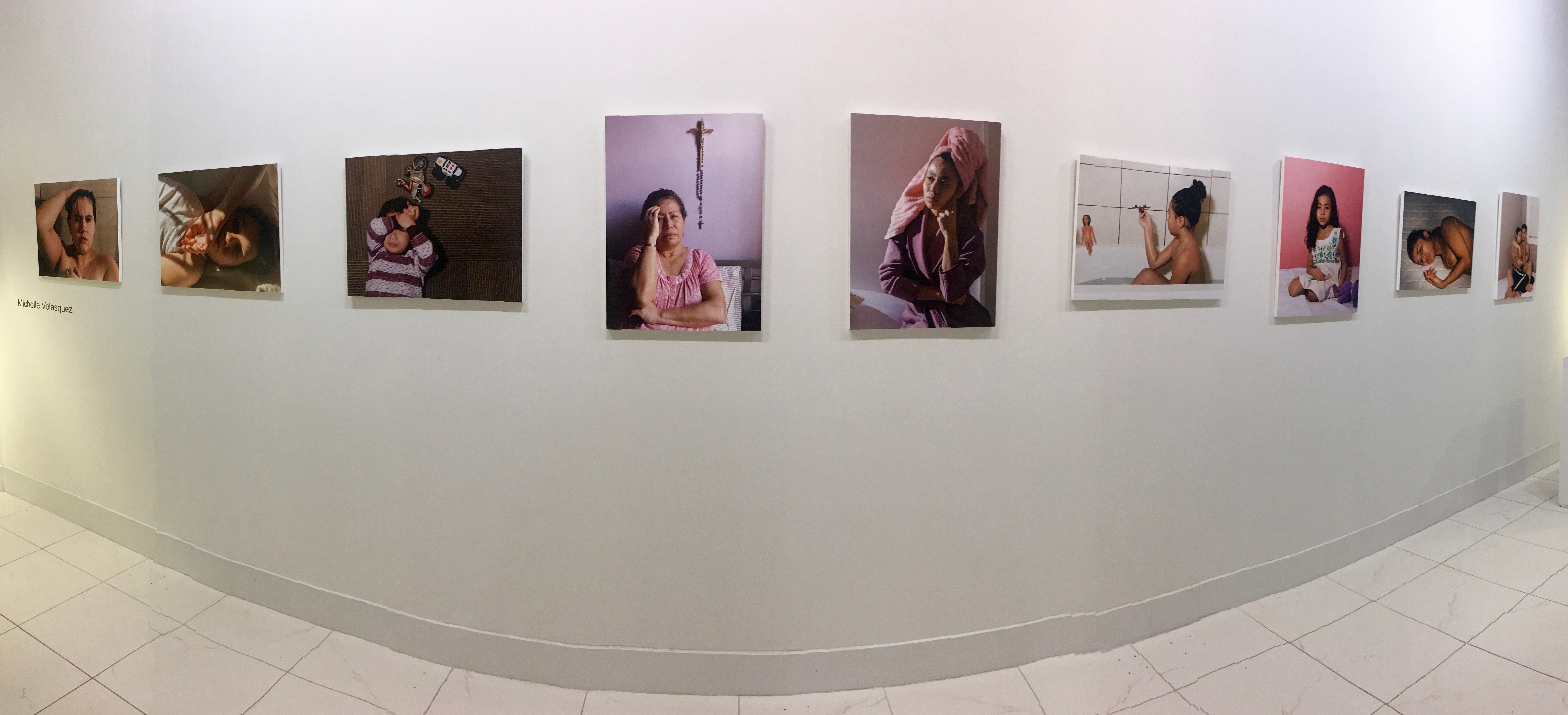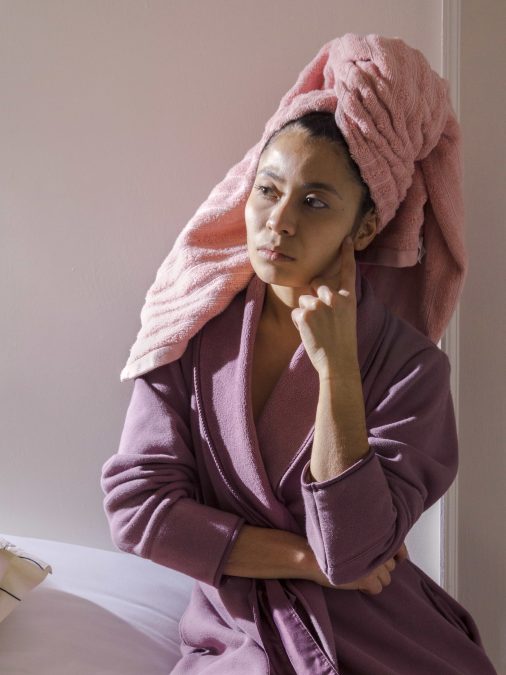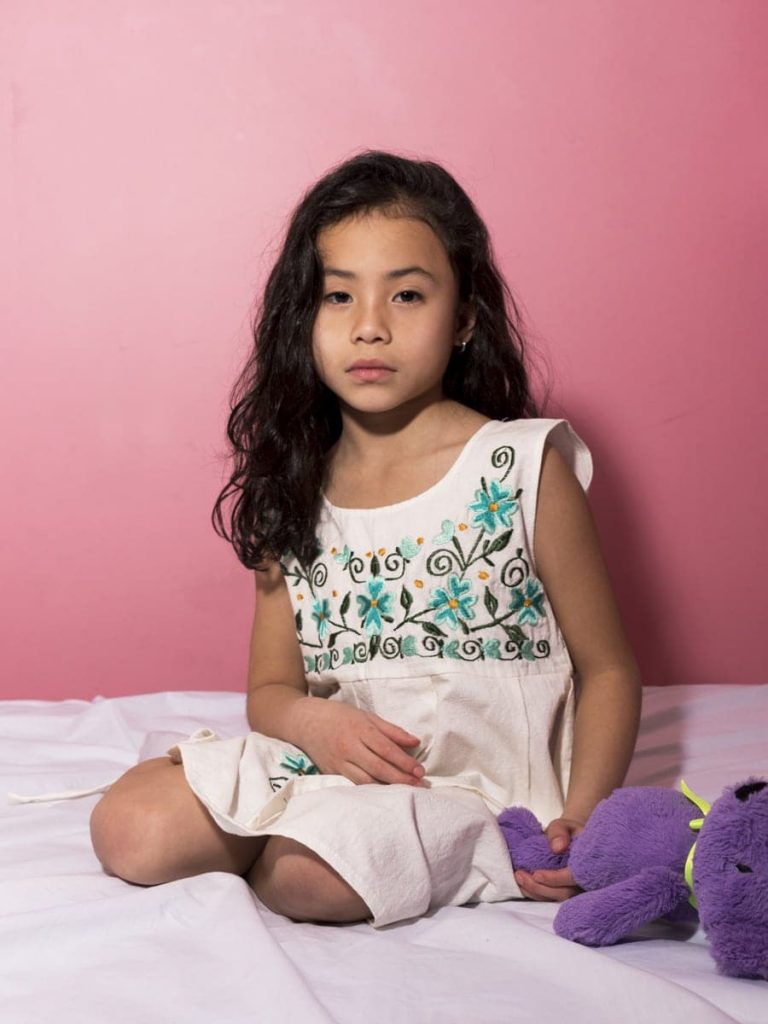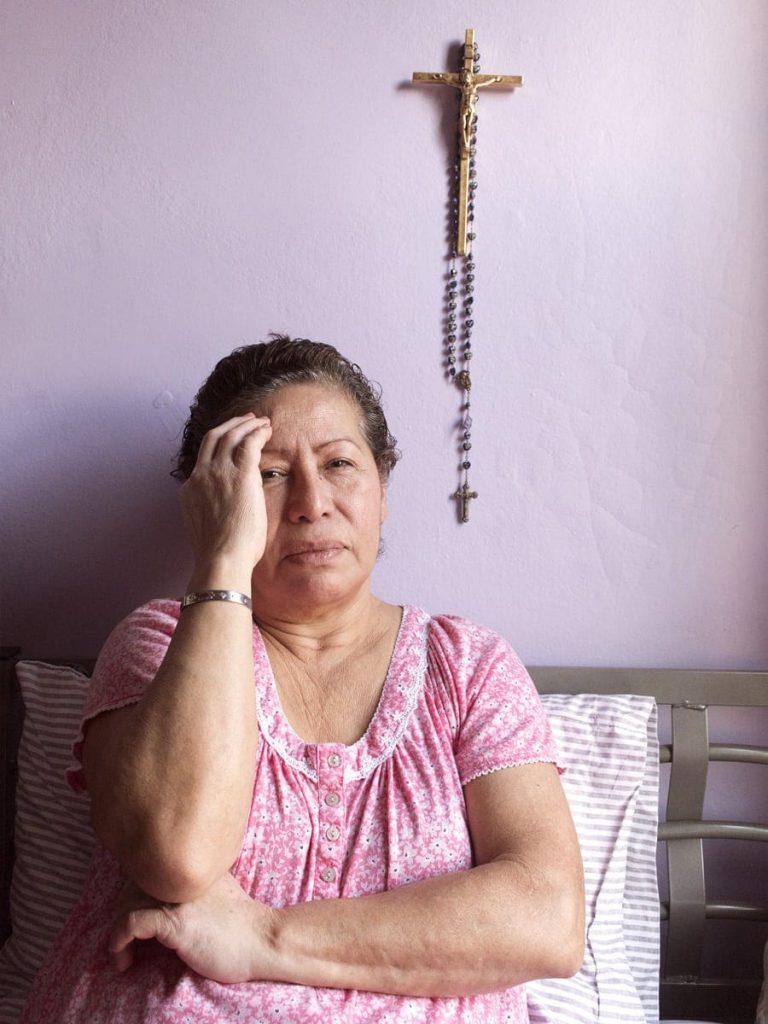VPA senior’s photo exhibition is a raw depiction of family, distance and identity
VPA senior's photo collection capitalizes on identity

The flashbacks come when she’s not expecting them — when the subway platform shakes right before the train comes, or when a car hits a particularly nasty pothole while she sleeps in the back seat. Michelle Velasquez remembers the earthquakes that shook El Salvador nearly 18 years ago, while her family lived there. The first one struck when Velasquez was five years old, and trapped her alone underneath fallen debris.
Five years later, at age 10, Velasquez came to the United States with her mother after her grandmother secured them green cards and passports. The decision to move was one of necessity, says Velasquez. El Salvador suffered following the earthquakes, and had little resources, options for college, or access to private or public education.
“My grandmother knew we had to come, there was no choice,” she says. Her father and aunt, among other relatives, still live in El Salvador. “In my whole life that I’ve been in the United States, which has been 11 years, I’ve visited El Salvador once,” she says. “It’s been about 9 years since I’ve seen them.”
Velasquez is no stranger to distance. Even now, while living in New York, the 23-year-old lives over four hours from her mother and siblings as she works towards a BFA in art photography at Syracuse University’s College of Visual and Performing Arts.

This past fall, Velasquez worked to find inspiration in the separation. She planned to create a video thesis by compiling recorded FaceTime videos with her family, both in the U.S. and in El Salvador, to depict how they connect when they are unable to see each other face to face. Velasquez also angled the video, in part, to capitalize on the drastic tolls that President Donald Trump’s administration is taking on immigrants in the United States (according to global human rights organization Human Rights Watch, the number of immigrants seized in the interior of the country has increased by 42 percent since 2016, for instance.) “It hit home because I had just gotten my citizenship,” says Velasquez. “It was very scary for me to not be able to be at peace for a long time, because at any time I felt like I could be deported, even with a green card.”
“Because I’m a first generation college student, my family kind of puts me on a pedestal,” says Velasquez. “They came here to give their kids a better life, and to have a better life for themselves, and by going to school that’s what I’m working towards.”
Now that she’s a U.S. citizen, Velasquez says she doesn’t worry so much about being deported anymore, yet she doesn’t entirely get treated like a citizen, either. She frequently experiences microaggressions, she says. A less direct form of racism, microaggressions are defined as “subtle snubs, slights, and insults directed toward minorities, as well as to women and other historically stigmatized groups, that implicitly communicate or at least engender hostility” in Scott Lilienfeld’s 2017 research on microaggressions. For example, the border patrol always asks Velasquez for a green card without even checking to see if she is a citizen, because they simply assume she is not.
In the spring, Velasquez shifted her thesis away from the broad lens of immigration and political climate to focus more acutely on her personal identity and connection with those around her — her own reality. “I wanted to show how I’ve struggled to find acceptance even among my family, who I love so much and who love me. For instance, dealing with them not accepting my sexuality,” says Velasquez. Her family holds strong traditional Catholic views and are less-than accepting of anyone who is not heteronormative, she explains. Although Velasquez came out to her mother and brother this past summer, and her aunt two years ago, the rest of her family doesn’t know and she has no plans to tell them. But, it’s hard to be someone who she’s not, says Velasquez, “Yes, I am an immigrant, but also, I’m gay. And, I’m Latina. All these little things make me, me. I love my family, but I wish they’d let me be who I am.”


Instead of video, she decided the collection would be better executed through still images. Velasquez included compelling photos of her family and self portraits. “I wanted the images to show all the aspects of myself that I don’t want to deny anymore,” she says. Vulnerability exudes from her work to a new degree, and her peers have watched her transform as an artist. Photography senior Carly Bova describes Velasquez’s work as increasingly intimate. “As the years have gone by, she’s become much more comfortable with putting herself in the her work,” says Bova. “She has a really great mind for the ideas but struggled with getting the picture to say what she wanted to until this year. She really pushed herself and made the portraits intense and beautiful.”
To accompany the portraits, Velasquez made a book, as a gift for her mother. She filled it with photos of the sky that she had sent to her mother to help bring her joy while she struggles with her mental health. “My mother told me this summer that she wanted to die. You don’t really expect that from your parents. Or from anyone,” she explained. “I didn’t know what to do, or how to help. She told me that she doesn’t feel like she has a purpose in life anymore.” Velasquez told her mother that she wanted to help give back her sense of purpose, to give her something to look forward to each day: a beautiful, shared sky.
Velasquez’s collection, “Mi Vida / My Life,” was displayed as part of the senior BFA exhibition held at the Shoppingtown Mall in late April. The artists transformed the entire venue, painting the walls and mounting their own work with guidance from art photography associate professor Yasser Aggour. The process is technically meticulous and tedious, Aggour explains. It requires extensive measurements and planning before the final cut-and-mount. The students spent the entire semester collaborating to decide between images, sizes, and frames. But it was worth it.
“I am just so happy,” Velasquez says of her finished collection. “I wanted the images to show my reality. I don’t want to deny those parts of myself anymore.”





